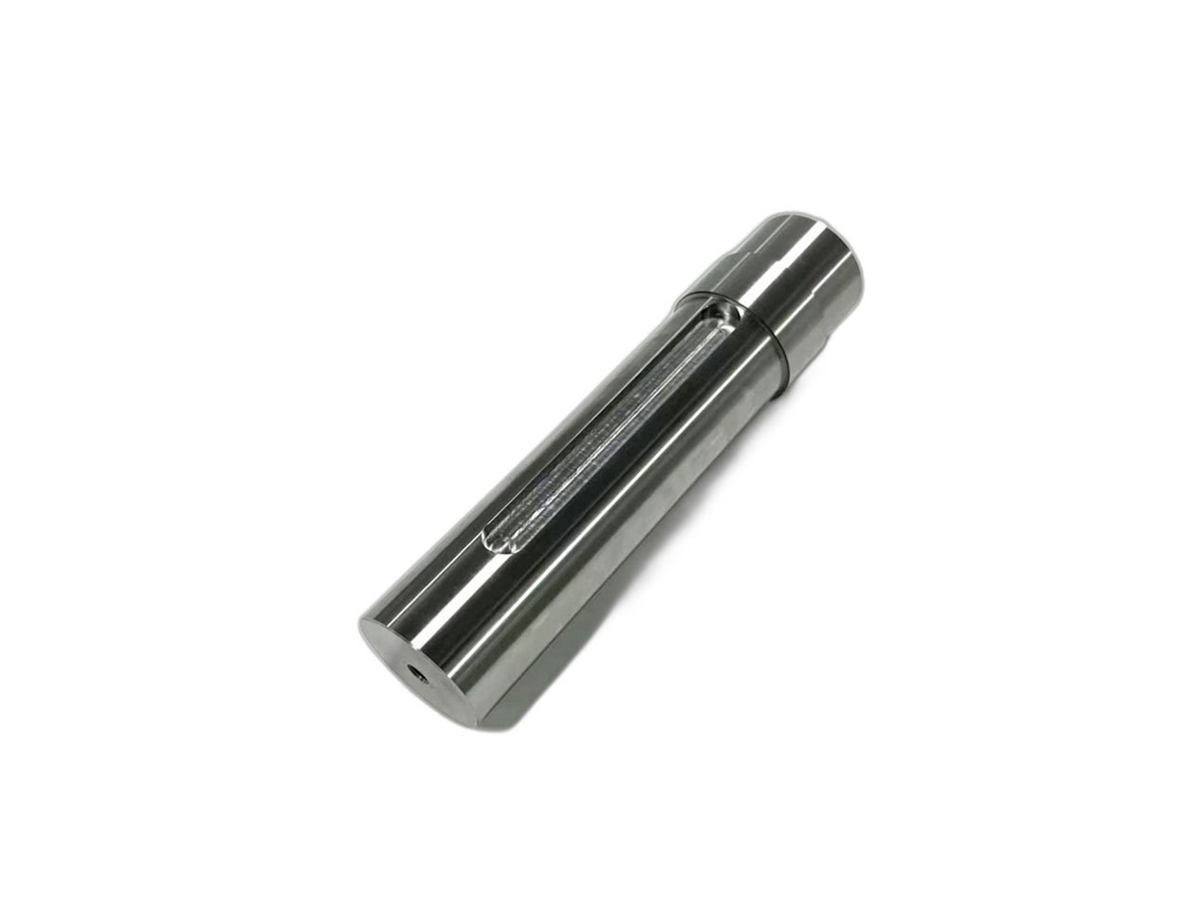CNC Grinding Superalloy Components for Aerospace: A Case Study in Precision and Durability
Introduction
The Aerospace industry requires materials and components capable of withstanding extreme temperatures, intense mechanical stresses, and harsh operating environments. Superalloys, renowned for exceptional strength, high-temperature stability, and superior corrosion resistance, are essential in aerospace applications such as turbine blades, engine components, and structural elements.
Advanced CNC grinding services play a critical role in achieving the high precision and surface integrity necessary for aerospace superalloy components. CNC grinding processes provide dimensional accuracy, superior surface finish, and enhanced fatigue life, significantly improving reliability and operational efficiency in aviation systems.
Aerospace Superalloy Materials
Material Performance Comparison
Superalloy Grade | Tensile Strength (MPa) | Yield Strength (MPa) | Max. Operating Temp (°C) | Typical Applications | Advantage |
|---|---|---|---|---|---|
1240-1450 | 1030-1240 | 700-750 | Turbine blades, compressor disks | Excellent creep resistance, high fatigue strength | |
930-1030 | 517-758 | 980-1000 | Exhaust nozzles, heat exchangers | Outstanding corrosion resistance, superior weldability | |
1150-1380 | 815-950 | 750-815 | Combustion chambers, turbine vanes | Excellent oxidation resistance, superior high-temperature strength | |
1240-1310 | 1034-1170 | 900-950 | Turbine components, structural brackets | High strength-to-weight ratio, exceptional heat resistance |
Material Selection Strategy
Choosing superalloys for aerospace applications depends on specific performance criteria:
Components experiencing high fatigue and creep stresses: Inconel 718 provides excellent fatigue and creep resistance, ideal for turbine blades and disks.
Highly corrosive and extreme-temperature environments: Inconel 625 excels with remarkable corrosion resistance and thermal stability.
Combustion chambers and turbine vanes requiring oxidation resistance: Nimonic 90 offers superior oxidation resistance and exceptional strength at elevated temperatures.
Lightweight components under extreme thermal stresses: Rene 41 offers a high strength-to-weight ratio and exceptional resistance to heat-induced deformation.
CNC Grinding Processes
Process Performance Comparison
CNC Grinding Technology | Dimensional Accuracy (mm) | Surface Roughness (Ra μm) | Complexity Level | Typical Applications | Key Advantages |
|---|---|---|---|---|---|
±0.002-0.005 | 0.2-0.8 | Medium | Turbine blade surfaces, sealing faces | Superior surface finish, high dimensional accuracy | |
±0.002-0.01 | 0.4-1.2 | High | Shafts, engine spindles | Precise cylindrical tolerances, excellent surface uniformity | |
±0.001-0.005 | 0.2-1.0 | High | Aerospace fasteners, precision pins | Rapid production, exceptional consistency in diameter control | |
±0.001-0.005 | 0.2-0.6 | Very High | Complex turbine blades, intricate engine components | Highly complex geometries, minimized machining setups |
Process Selection Strategy
The optimal CNC grinding process for aerospace superalloys varies according to component precision and complexity:
Precision surface finishing: Surface Grinding ensures tight flatness and exceptional surface integrity.
High-accuracy rotational components: Cylindrical Grinding provides precise diameters and superior concentricity.
Components requiring precise diameter uniformity at high volumes: Centerless Grinding achieves rapid throughput with consistent results.
Highly intricate geometries and multi-dimensional surfaces: Multi-Axis CNC Grinding delivers unmatched versatility and precision.
Surface Treatment
Surface Treatment Performance
Treatment Method | Corrosion Resistance | Wear Resistance | Temperature Limit (°C) | Typical Applications | Key Features |
|---|---|---|---|---|---|
Excellent (≥1000 hours ASTM B117) | High (hardness ~HV1000-1200) | Up to 1150 | Turbine blades, combustor liners | Reduced thermal load, enhanced lifespan at high temperatures | |
Excellent (600-800 hours ASTM B117) | Moderate (low friction surfaces) | Up to 400 | Compressor components, precision parts | Improved surface smoothness, minimized corrosion initiation | |
Outstanding (>1000 hours ASTM B117) | Very High (Surface hardness HV2000-3000) | 450-600 | Wear-intensive engine parts, bearings | Exceptional wear resistance, enhanced mechanical protection | |
Good (300-600 hours ASTM B117) | Moderate-High (fatigue life increase ~30%) | Up to 400 | Turbine blades, high-cycle fatigue components | Increased fatigue resistance, improved stress profile |
Surface Treatment Selection
Surface treatment for aerospace superalloys should be carefully aligned with operational demands:
Extreme high-temperature turbine environments: Thermal Barrier Coating reduces thermal load and prolongs component lifespan.
Components requiring low friction and improved corrosion resistance: Electropolishing ensures smoother surfaces and minimal friction.
High-wear areas in engine and bearing components: PVD Coating provides superior wear resistance and durability.
Fatigue-critical structural components: Shot Peening enhances fatigue resistance by inducing beneficial compressive stresses.
Quality Control
Quality Control Procedures
Dimensional verification using high-precision CMM and optical comparators.
Surface roughness and integrity checks with advanced profilometers.
Non-destructive testing (NDT) methods, including ultrasonic and eddy-current inspections.
Fatigue testing and mechanical property assessments (ASTM E8 and ASTM E466 standards).
Corrosion and oxidation resistance testing per ASTM B117 (salt spray testing).
Complete documentation adhering to AS9100, ISO 9001, and NADCAP aerospace quality standards.
Industry Applications
Aerospace Superalloy Applications
Turbine blades and compressor disks for aircraft engines.
Exhaust systems, combustion chambers, and high-temperature sections.
Structural components and brackets with critical strength and durability demands.
Precision fasteners, shafts, and bearings require exceptional dimensional accuracy.
Related FAQs:
Why are superalloys preferred in aerospace applications?
How does CNC grinding enhance precision in aerospace manufacturing?
What makes Inconel ideal for high-temperature aerospace components?
How do surface treatments improve superalloy durability in aerospace?
What quality standards apply to CNC-ground aerospace superalloy components?

